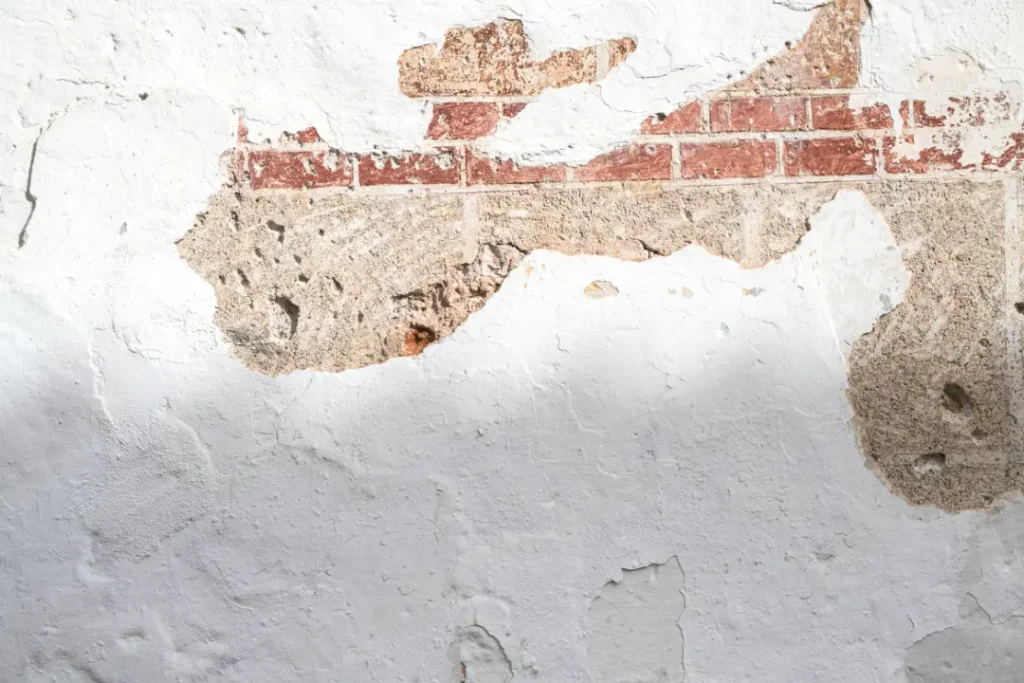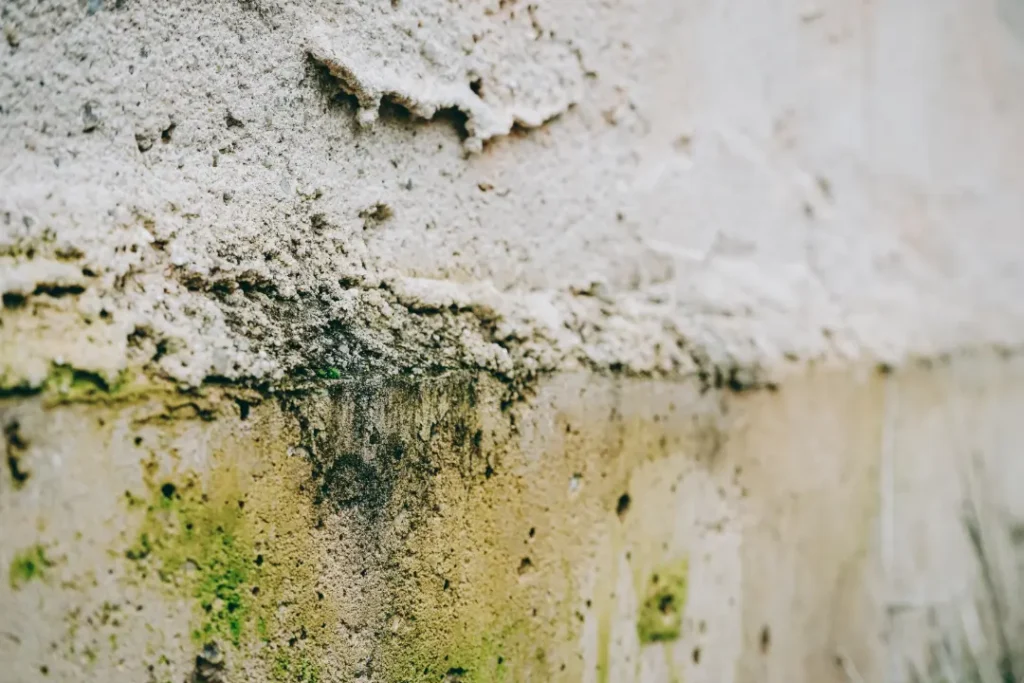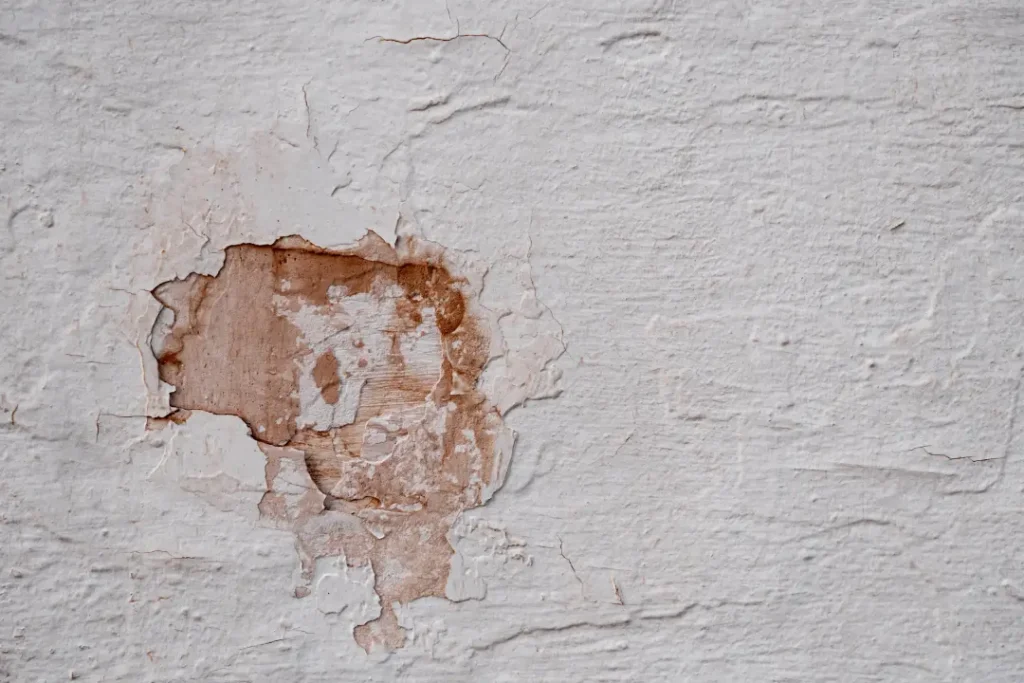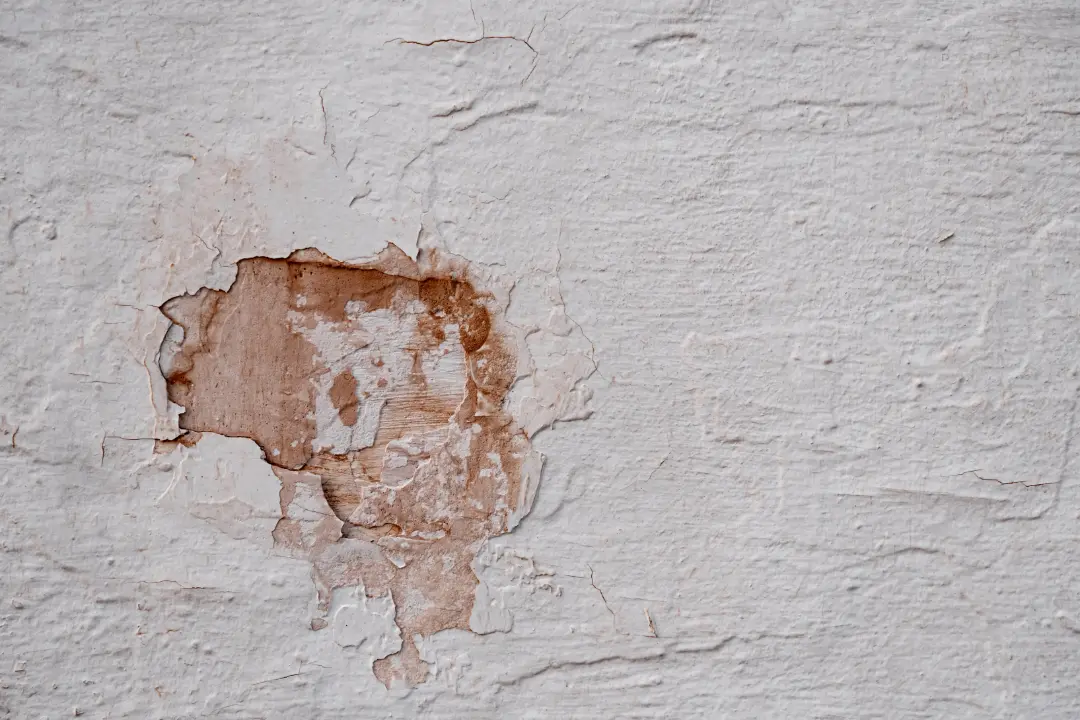Choosing between damp proofing and a damp proof membrane can be challenging. Which is better for your home, damp proofing or membrane? This article will compare their effectiveness, cost, and longevity to help you decide.
Key Takeaways
- Damp proofing methods, including damp proof courses and injections, are affordable and less invasive, allowing homeowners to effectively combat moisture issues without extensive renovations.
- Damp proof membranes serve as a robust physical barrier against moisture ingress, providing long-lasting protection that is particularly effective in high-moisture areas such as basements.
- Consulting a damp proofing specialist is crucial for assessing moisture issues and selecting the most suitable solution, ensuring the integrity and comfort of the home while potentially reducing energy costs.
- Environ Property Services offers comprehensive damp proofing solutions, including damp surveys, rising damp treatment, damp proof course (DPC) installation, damp proof membranes, and more, ensuring long-term protection for both modern and historic properties.
Understanding Damp Proofing
Damp proofing plays a crucial role in preserving both the structural strength and comfort of buildings by addressing moisture concerns such as rising dampness, penetrating damp and condensation. This ensures that homes stay dry and secure.
The main objective of this process is to bar moisture from affecting building materials, which could otherwise lead to significant structural damage over time. In the field of damp proofing, various products are utilised, including damp proof membranes, water-repellent creams, and alternative solutions created specifically for hindering the ingress of moisture.
The preference for damp proof methods compared to other techniques aimed at guarding against moisture lies in their cost-effectiveness and minimally invasive application. Unlike certain waterproofing coatings, which might trap moisture inside walls, thus impairing a structure’s ability to breathe properly, approaches used within the realm of damp proofing offer greater breathability while being economically favourable, too. As such, they present an appealing choice for homeowners who wish to safeguard their properties from problems related to dampness without undergoing major renovations or repairs.
Types of Damp Proofing Methods
Numerous strategies exist to combat moisture-related issues in structures, each with its distinct mode of application and success rate. Commonly employed is the damp proof course (DPC), which serves as a shield against water ascent within walls.
The barrier can consist of materials like plastic sheets or be created through liquid chemical injections into the wall structure. Over time, an existing DPC might degrade and need replacement. This can be accomplished by various techniques, such as re-injection processes or fitting a new proof membrane.
For creating a deterrent against humidity, damp proof injections are another potent alternative that establishes a chemical blockade. This technique involves injecting either cream or fluid into pre-drilled holes at mortar lines, allowing it to penetrate the wall and establish an enduring barrier against moisture ingress. Deciding between employing injection-based methods versus installing a new DPC hinges on individual property conditions along with how severe the moist issue presents itself.
Seeking guidance from professionals specialising in damp proofing will assist in pinpointing the optimal intervention for your residence’s specific situation concerning moisture intrusion control measures—whether it entails introducing fresh DPCs, utilising injection therapies or applying particular membranes dedicated to resisting seepage.

Benefits of Damp Proofing
Damp proofing is a widely favoured solution for homeowners aiming to shield their properties from moisture intrusion. This method stands out for its cost effectiveness compared to other techniques designed to prevent moisture damage.
Applying damp proof methods can be simple, especially in confined spaces. Injecting a damp proof course is less disruptive and more cost-effective than installing entire damp proof membranes into walls or floors. Therefore, it is an efficient approach for addressing minor dampness issues.
By blocking moisture entry through effective damp proofing measures, you can maintain the building’s structural integrity, reduce health risks associated with mould, and improve comfort within the home environment.
What is a Damp Proof Membrane (DPM)?
A damp proof membrane (DPM) is a protective barrier to prevent moisture from infiltrating through floors, walls, or ceilings. These membranes are crafted using materials like plastic, rubber, or bitumen and are frequently utilised alongside additional methods of damp proofing to achieve thorough protection against moisture. The primary role of a DPM is to preserve the building’s structural integrity while also maintaining an interior free from moisture-related issues.
Frequently deployed beneath concrete floors and embedded within damp walls, damp proof membranes combat problems such as rising damp and penetrating damp. When selecting a suitable damp proofing membrane for installation, it is important to consider factors, including the type of structure involved, the extent of existing moisture issues present in the area being treated, and how long-lasting you intend the solution to be.
Proper installation of these membranes is crucial for maximising their effectiveness in preventing moisture infiltration beneath concrete flooring and within wall cavities.
Types of Damp Proof Membranes
Various types of damp proof membranes are available, each suited for different applications and levels of moisture protection.
Polyethylene membranes, for instance, are commonly used because they create a barrier against moisture ingress. These membranes can be applied to basement walls and floors to provide comprehensive damp protection.
Cavity drain membrane is another type of DPM, often used in basements and high-moisture areas. These membranes create a cavity for water to travel, preventing it from entering the interior spaces of the building.
Heavy-duty, damp proof membranes are designed for high-risk areas, providing robust protection against significant moisture levels. Delta membranes, commonly used in both residential and commercial projects, are an example of such heavy-duty solutions.
When selecting a damp proofing membrane, it’s important to consider factors such as the material, thickness, and application methods. Damp proof membranes can be applied internally or externally, depending on the specific requirements of the property and the level of protection needed.
Installation Process for DPM
The process of installing a damp proof membrane (DPM) entails vital steps to achieve effective moisture defence. It can be applied either during the initial construction phase or later added as a retrofit solution for existing rising damp or related moisture concerns. A critical part of this installation is ensuring the membrane overlaps with an existing damp proof course (DPC), reinforcing moisture entry resistance. This overlapping technique establishes an unbroken barrier, safeguarding building materials from becoming compromised by water ingress.
For comprehensive protection against humidity, sheets of damp proof membranes are carefully spread out, and their seams are thoroughly sealed together. The integrity of the installation must be maintained because any rips or punctures in these membranes could lead to unwanted moisture absorption, rendering the method ineffective.
Building standards dictate that polyethylene sheets with a thickness of at least 1200 gauge be used within these types of barriers for adequate fortification against humidity penetration.
Comparing Damp Proofing and Damp Proof Membranes
Both damp proofing and damp proof membranes effectively shield your property from moisture, offering distinct advantages depending on how they are applied. Techniques like installing a damp proof course or performing injections address the issue of preventing moisture ingress by establishing barriers within floors and walls.
Damp proof membranes provide a physical barrier that stops moisture from getting into building materials. They act as an efficient defence against issues such as rising dampness and other problems associated with moisture, including serving as a vapour barrier. For an accurate comparison, let’s consider their effectiveness in specific situations, the potential costs involved, and the maintenance that will be required over time.

Effectiveness in Different Scenarios
The effectiveness of damp proofing, including the use of damp proof membranes, varies depending on the specific moisture challenges a building faces. To effectively combat different types of damp problems, it’s essential to apply the appropriate methods:
- Rising damp occurs when water travels up walls through capillary action. This is typically treated using a damp proof course or injection techniques.
- Penetrating damp results from water seeping through external walls and requires targeted external measures to prevent infiltration.
- Condensation issues are best managed by improving ventilation and thermal insulation to reduce excess moisture buildup inside the property.
Understanding these distinct moisture problems allows property owners to implement the most effective solutions for long-term damp protection.
In areas with high moisture exposure, such as basements or spaces prone to water ingress, specialised barrier systems like damp proof membranes offer a highly effective solution. These membranes create a protective layer that prevents moisture from penetrating construction materials, preserving both structural integrity and interior comfort.
Beyond moisture control, damp proof membranes also help reduce thermal bridging, enhancing energy efficiency by maintaining stable indoor temperatures and preventing insulation damage caused by damp walls. A thorough assessment of moisture levels, building stability, and environmental factors is crucial in selecting the most effective damp proofing strategy for any property.
Cost Comparison
When choosing a method to address dampness, the cost is a crucial factor in deciding between damp proofing techniques and installing damp proof membranes. The initial costs of these solutions can vary based on materials and labour. For example, treatments like damp proof injections are generally less expensive than installing damp proof membranes throughout an entire building, making them a more budget-friendly option for treating localised areas.
However, it is important to consider both the initial expenses and the potential future costs. Damp proof membranes tend to be more durable and require less maintenance than traditional damp proofing methods. Additionally, damp conditions can increase heating expenses by reducing the thermal efficiency of buildings.
Homeowners are encouraged to carefully assess both the immediate and long-term costs associated with each approach—whether damp proofing or using membrane systems—for moisture issues. While lower-cost options may seem attractive initially, investing in energy-efficient, moisture-proof membranes could result in lower long-term expenses by maintaining a dry and well-insulated environment in homes or buildings.
It is advisable to conduct a thorough cost analysis to make an informed decision about moisture protection strategies that align with your budget and specific needs related to humidity control.
Longevity and Maintenance
As a property owner, it’s essential to consider the durability and upkeep of damp proof membranes and general damp proofing methods. When properly installed, damp proof membranes can last as long as the structure itself, providing continuous protection against moisture penetration. Their exceptional durability makes them a reliable solution in areas prone to high humidity, as they minimise the need for frequent maintenance and repairs.
The primary maintenance tasks for these membranes typically include periodic inspections and ensuring that drainage systems remain unobstructed.
In contrast, more traditional methods, such as damp proof courses or injection techniques, often require additional maintenance efforts and may need reapplication over time. This is due to the risk that infiltrating moisture could damage structural components, leading to higher repair costs and potential safety concerns.
So, while various damp proofing methods can effectively address moisture issues in structures, damp proof membranes frequently provide a stronger protective barrier with lower maintenance requirements. This advantage is particularly valuable in environments with excessive humidity.
How to Choose the Right Solution for Your Home
Determining the appropriate damp proof solution necessitates an assessment of your building’s particular situation and moisture levels. Each property may require a distinct approach, and grasping the exact nature of damping impacting your house is vital in deciding on the most efficient method. Whether it’s conventional proofing techniques or installing a damp proof membrane that you are considering, conducting an in-depth evaluation of what your property requires is key to securing lasting protection from moisture.
Assessing Your Property’s Needs
A meticulous evaluation of your property’s damp issues requires an expert in damp proofing to conduct a detailed examination. This professional analysis can reveal concealed moisture problems that might not be obvious at first glance, offering a thorough insight into the overall health of your property. The building’s vintage, construction design, and existing drainage systems all play significant roles in identifying the optimal solution for damp proofing.
Choosing a provider renowned for its strong qualifications within the industry may increase the chances of achieving effective outcomes and securing long-term defence against dampness.
Through diligent evaluation of what your property necessitates, you are better positioned to determine the most appropriate method of damp proofing tailored specifically to safeguard your home.
Consulting a Damp Proofing Specialist
Seeking the expertise of a damp proofing specialist is crucial when determining the optimal moisture barrier for your residence. These experts not only ensure correct application but also substantially diminish potential future risks associated with dampness. For authoritative guidance on damp proofing, reaching out to us at Environ Property Services can yield beneficial insights and tailored recommendations.
Homeowners who seek advice from a certified damp proofing expert can rest assured that their selected solution will be effectively implemented by professionals.
Choose Environ Property Services for Damp Proofing in London
At Environ Property Services, we offer long-lasting, effective damp solutions for homes and commercial buildings. With over 15 years of industry experience, our team specialises in identifying and resolving all types of damp issues, from rising damp and penetrating damp to condensation control.
We begin with a comprehensive damp survey, using advanced diagnostic tools to assess moisture levels and identify the root cause of the problem. This allows us to tailor a bespoke damp proofing strategy suited to your property’s specific needs, ensuring maximum protection and efficiency.
Our services include damp proof course (DPC) installation, damp proof membranes, waterproofing solutions, and ventilation improvements, all designed to protect your property from moisture damage.
With a reputation built on precision, reliability, and customer satisfaction, we take pride in delivering high-quality workmanship that guarantees long-term results. Whether you own a modern apartment or a historic property requiring delicate restoration, we have the expertise to safeguard your investment.
Contact Environ Property Services today for a detailed damp survey and expert recommendations.
Damp Proofing for Every Building Type: Protecting Heritage and Modern Structures
Preserving Historical Buildings with Specialist Damp Proofing
Restoring historical buildings presents unique challenges due to their age, delicate materials, and traditional construction methods. At Environ Property Services, we specialise in heritage friendly damp proofing techniques that protect these structures without compromising their architectural integrity. Our methods ensure moisture control without altering the original aesthetics of the building.
Our restoration process also includes meticulous stone and brickwork repairs, structural reinforcements, and moisture assessments tailored to historic properties. By combining modern damp proofing technology with traditional craftsmanship, we effectively protect heritage buildings from damp damage while maintaining their cultural and historical significance.
Advanced Damp Proofing for Contemporary Buildings
For modern construction projects, we utilise cutting-edge damp proofing techniques to provide strong, long-lasting moisture protection. Environ Property Services implements high-performance damp proof membranes and advanced waterproofing systems to create an impenetrable barrier against rising damp, condensation, and water ingress. These solutions are especially beneficial for new builds, basements, and high-moisture environments, ensuring superior protection and longevity.
Beyond damp prevention, our contemporary damp proofing solutions contribute to energy efficiency and indoor air quality, reducing heat loss and preventing mould-related health issues. By incorporating state-of-the-art materials and leading methods in the damp proofing industry, we help developers and homeowners future-proof their properties against moisture damage.
So whether you are constructing a new home or managing a large-scale commercial project, Environ Property Services ensures your building remains structurally sound and moisture-free for years to come.
Common Problems Without Proper Damp Protection
Proper damp proofing can cause significant problems, affecting both structural integrity and the well-being of occupants. If these dampness issues are not addressed, they can lead to serious damage to the building’s framework, compromising its safety and stability. Inadequate protection against dampness allows water to seep into the structure, harming walls, floors, and other foundational elements.

Structural Damage
Inadequate damp protection can lead to severe structural damage, as moisture gradually deteriorates the materials that make up a building, threatening its overall stability. Rising damp is problematic as it ascends through walls and internal linings via capillary action, causing significant harm.
When signs of damp, like stains or mould, become apparent, they signal an urgent need for effective proofing solutions to halt the destruction. Addressing any underlying issues swiftly is essential to preserve the integrity of the structure and avoid costly repairs.
By implementing robust measures for damping proofing, you safeguard your property from structural impairment risks while ensuring its durability over time.
Health Risks
Environments with excessive dampness can pose considerable health hazards, especially in relation to respiratory ailments. Continuous exposure to such damp conditions fosters the proliferation of mould, which has been associated with respiratory difficulties and allergic responses. For individuals suffering from asthma, living in environments burdened by damp can intensify their condition. Hence, implementing effective proofing against damp is critical for preserving a healthy living space.
Condensation in homes frequently causes indoor moisture problems, causing water buildup on various surfaces that encourages mould development. Taking proactive measures to keep your home secure helps significantly elevate comfort levels by staving off damage related to moisture and promoting a more wholesome habitat.
Safeguarding your dwelling from these potential health threats is integral to ensuring it remains secure and agreeable for its inhabitants.
Energy Inefficiency
Moisture within buildings can notably decrease energy efficiency, culminating in elevated heating and cooling expenses. Soggy walls and floors contribute to the dissipation of heat, thus inflating the cost required to maintain a warm building environment. Moist walls may form thermal bridges that undermine insulation performance and lead to increased energy expenditures.
Damp proof membranes play a crucial role in enhancing both energy efficiency and indoor air quality. They create dry and well-insulated environments that help prevent moisture issues. By doing so, property owners can improve energy conservation, reduce ongoing utility costs, and enhance comfort regarding temperature regulation.
Conclusion
Choosing the right method for damp protection is crucial for maintaining your home’s structural integrity, health, and thermal efficiency. Cost-effective solutions such as damp proof courses and injection treatments are minimally intrusive and suitable for addressing smaller damp issues. On the other hand, damp proof membranes provide a robust barrier against moisture, especially in areas with high humidity.
To determine which approach is best for your home, it is important to assess its specific condition and consult a professional who specialises in damp proofing.
Whether you are addressing existing problems like rising or penetrating damp, or taking preventive measures against future moisture ingress, understanding these different techniques is essential. Investing in proper damp proofing measures ensures a safe and healthy living environment for years to come.
Frequently Asked Questions
What is the primary difference between damp proofing and damp proof membranes?
The primary difference between damp proofing and damp proof membranes is that damp proofing creates barriers within walls and floors to control moisture ingress, while damp proof membranes provide a physical barrier that prevents moisture from entering building materials.
Thus, damp proof membranes offer a more robust solution against rising damp and moisture-related issues.
How long do damp proof injections typically last?
Damp proof injections typically last several decades, providing a long-term solution against rising damp. This durability ensures continued protection for your property over time.
Can damp proof membranes be installed in existing buildings?
Yes, damp proof membranes can be retrofitted in existing buildings to combat moisture issues. Proper installation is essential for their effectiveness in preventing moisture penetration.
What are the health risks associated with living in a damp environment?
Residing in an environment with high moisture levels can lead to serious health hazards, such as asthma, allergic reactions, and respiratory issues. If exposure is extended, mould may proliferate, aggravating these health concerns.
How does dampness affect a home’s energy efficiency?
Dampness significantly reduces a home’s energy efficiency by causing heat loss through wet walls and floors, which in turn increases heating costs and diminishes insulation effectiveness.
Addressing dampness is essential for maintaining both energy efficiency and thermal comfort.

